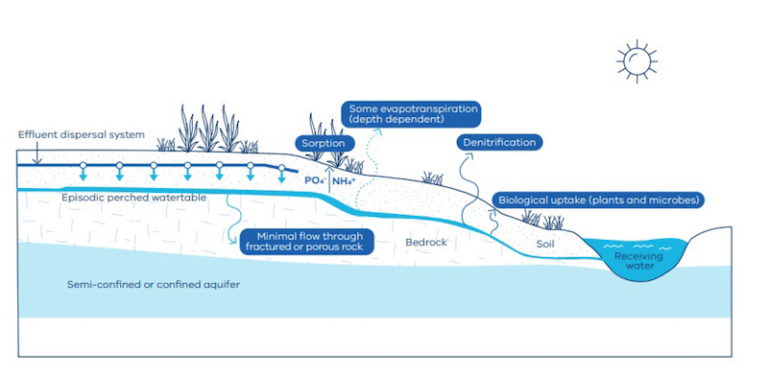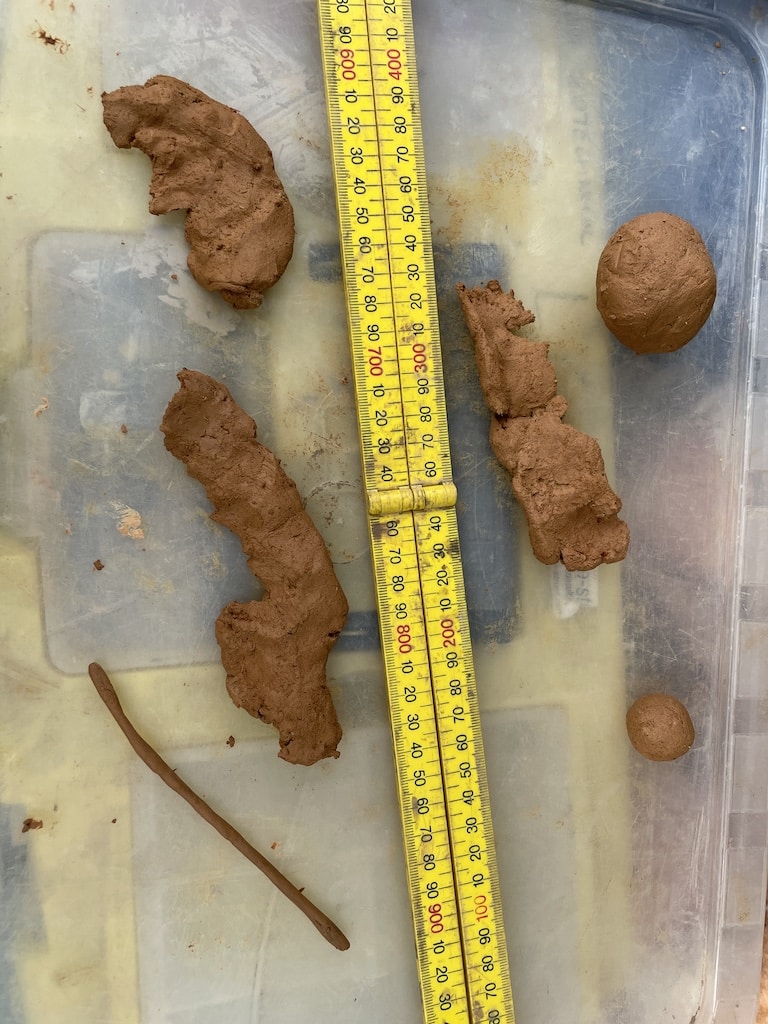Introduction:
Dispersive soils are characterised by their tendency to break down and disperse into individual particles when exposed to water. This phenomenon is primarily due to the presence of high levels of sodium ions relative to calcium and magnesium ions within the soil.

When water infiltrates dispersive soils, the clay particles detach and separate, leading to a suspension of fine particles in the water. This dispersion can significantly affect the soil’s structural integrity, causing it to become highly erodible and unstable. In the context of wastewater dispersal systems, dispersive soils present a particular challenge as they are prone to rapid degradation and clogging, impeding the effective distribution and treatment of effluent.
The dispersive nature of these soils means that fine particles can easily migrate and accumulate within the soil pore spaces. As wastewater percolates through a dispersive soil dispersal field, the detached clay particles are carried along with the effluent. Over time, these particles settle and clog the soil pores, drastically reducing the soil’s permeability. This blockage prevents the effluent from infiltrating the soil properly, leading to surface pooling and potential runoff. The clogged pores also diminish the soil’s ability to aerate, which is crucial for the biological processes that break down organic matter in the effluent. Consequently, the treatment efficiency of the wastewater dispersal system is compromised, posing a risk of environmental contamination.
Furthermore, the blockage of soil pore spaces by dispersive particles can lead to hydraulic failure of the wastewater dispersal system. As the soil becomes increasingly impermeable due to clogged pores, the effluent can no longer be absorbed effectively. This situation can cause effluent to back up into the septic tank, leading to system overflow and potential surface discharge of untreated wastewater. In addition to the immediate sanitary hazards, the hydraulic pressure buildup can exacerbate soil erosion and further destabilize the dispersal field area. Addressing the challenges posed by dispersive soils often requires specific design and management strategies, such as incorporating soil amendments to improve soil structure and permeability or utilizing alternative dispersal methods that are less reliant on soil infiltration. These measures help ensure that wastewater dispersal systems remain functional and environmentally safe, even in the presence of dispersive soils.
Effective mitigation against dispersive soils involves several amelioration techniques that aim to improve soil structure and reduce dispersion. One commonly used method is the application of soil amendments such as gypsum (calcium sulfate). Gypsum helps to displace the sodium ions that cause dispersion by providing calcium ions that bind to clay particles, promoting flocculation and aggregation. This improves soil structure, increases permeability, and reduces the tendency of soil particles to disperse in water. Applying gypsum to dispersive soils in and around wastewater dispersal fields can significantly enhance their ability to absorb and filter effluent, thereby maintaining the functionality and effectiveness of the dispersal system.
Another amelioration strategy involves improving the organic matter content in dispersive soils. Adding organic materials, such as compost or well-rotted manure, can enhance soil aggregation and stability. Organic matter helps to form a more porous and cohesive soil structure, increasing water infiltration and reducing the risk of pore blockage by dispersed particles. Additionally, organic amendments support the growth of soil microorganisms that contribute to the breakdown of organic matter in wastewater, further enhancing soil health and the treatment capacity of the dispersal field. In combination with physical measures such as deep ripping or subsoiling to break up compacted layers and improve drainage, these organic and chemical amendments can provide a comprehensive approach to mitigating the challenges posed by dispersive soils, ensuring the long-term sustainability and efficiency of wastewater dispersal systems. For more information regarding Land Capability Assessments for Septic speak to Chris or Request an obligation free quotation.





